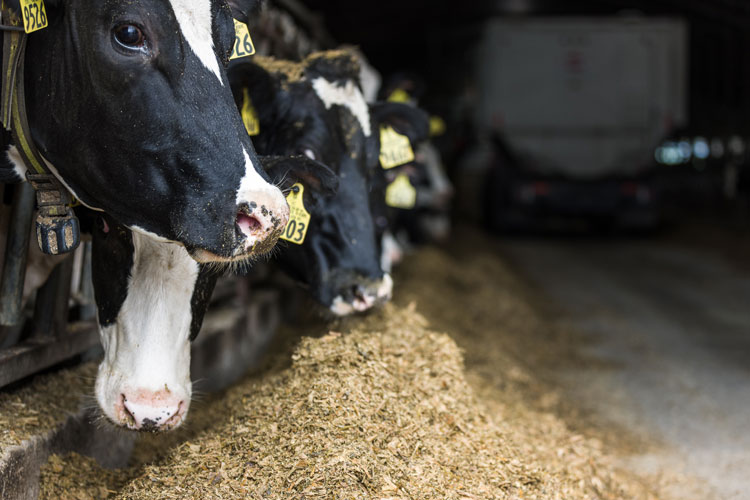
Consider focusing on these three areas.
• Nutrition:
• Nutrition:
The intestinal wall of a cow is only a single layer of cells that is bound together by what are known as “tight junctions.” These tight junctions are made of protein and are responsible for regulating what comes in or through the cells and into the animal’s bloodstream. Volatile fatty acids (VFAs) that are produced in the rumen, including butyrate, are important energy sources for those intestinal epithelial cells. It’s important that the rumen is a stable environment where rumen microbes can continue producing appropriate VFAs to ensure total gut health and function.
When animals are stressed, those tight junctions in the intestinal epithelium start to separate and lose their integrity. This is also known as “leaky gut syndrome.” Any stress, such as calving, feed changes, heat, and transportation can contribute to the breakdown of those protein tight junctions in the epithelium of the intestines. A balanced diet and a diverse and resilient gut microbiome help to mitigate that stress and improve overall gut function.
• Optimal rumen environment:
• Optimal rumen environment:
Subacute ruminal acidosis (“SARA”) is another stressor that can cause leaky gut. SARA happens when the rumen pH drops below 5.6 repeatedly or for prolonged periods of time. A rumen pH that stays below 5.6 for too long causes death of rumen microbes and a release of lipopolysaccharide into the rumen. This stress is another cause of leaky gut.
One way to combat these challenges is to work with your nutritionist to incorporate an immune support feed additive. With the right product, cows have a better chance of overcoming challenges, improving immune function, optimizing rumen and liver health, and maintaining consistent feed intake. This generates better animal performance and less incidence of SARA.
• Growth and body condition:
It’s well known that calfhood diseases can have life-long consequences. Being able to bolster that calf’s immune system, optimize rumen development, and strengthen the gut microbiome to optimize its growth and condition will all contribute to the success of those animals and ultimately the success of the operation.
The growth and body condition of the animals entering or re-entering the milking herd is extremely important. A growing first-calf heifer has different energy and glucose needs than a third lactation cow. Ensuring that those animals coming into the milking string have proper maturity, growth, and condition directly relates to their health and productivity. Heifers that are immature will never produce the amount of milk that their counterpart that has reached appropriate maturity at calving produces.
It’s vital to deliver the necessary nutrients to each cow at the correct stage of life to maintain optimal output. Proper nutrition and an ideal rumen environment, appropriate animal growth, and condition all play a part when it comes to cow health, welfare, and the overall success of a farm.
You can learn more about the impact of health and nutrition on herd health and welfare at www.DiamondV.com/NutriTek.



